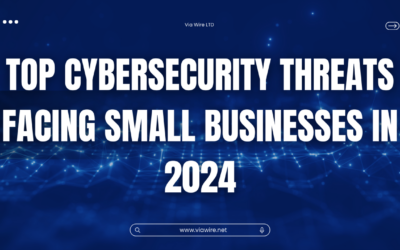Did you know that 43% of cyberattacks target small businesses, and 60% of these businesses close within six months of being attacked? 🤯 🤯
Cyber threats are becoming increasingly sophisticated, and both individuals and businesses need to be proactive in protecting their data. This guide offers essential tips and strategies for maintaining robust online security.
Strong Password Management 🔐
Create Strong Passwords 🏋🏼♀️ 🔑
The first line of defence in cybersecurity is a strong password. Avoid common passwords such as “password123” or “admin”. Instead, create complex passwords that include a mix of upper and lower case letters, numbers, and special characters. For example, a strong password could be “P@ssw0rd!2024”.
Use a Password Manager 📱🔏
Keeping track of multiple complex passwords can be challenging. A password manager is a useful tool that securely stores all your passwords in one place. Popular options include LastPass, Dashlane, and 1Password. These tools can generate strong passwords and automatically fill them in for you, ensuring that you don’t have to remember every single one.
Change Passwords Regularly 🔄 💱
Regularly updating your passwords adds an extra layer of security. Aim to change them every three to six months. Additionally, avoid using the same password across multiple sites; if one site is compromised, others could be at risk too.
Recognising Phishing Attacks 🎣 📧
Be Skeptical of Unsolicited Emails 📩 🚨
Phishing attacks often come in the form of unsolicited emails that appear to be from legitimate sources. These emails typically ask for sensitive information such as login credentials or financial details. Always verify the sender’s email address and be cautious of unexpected requests.
Look for Red Flags 🔍 🚩
Phishing emails often contain telltale signs such as poor grammar, generic greetings like “Dear Customer”, and urgent language that pressures you to act quickly. Legitimate companies usually personalise their communications and won’t pressure you into making hasty decisions.
Don’t Click on Suspicious Links 🚫 🔗
Hover over links to see the actual URL before clicking. If it looks suspicious or doesn’t match the sender’s domain, don’t click on it. Instead, go directly to the company’s website through your browser. If in doubt, contact the organisation directly using a known, trusted method.
Using Antivirus Software 🛡️ 🖥️
Install Reliable Antivirus Software 🔍 🔒
Antivirus software is a critical component of online security. It helps detect and remove malware, viruses, and other threats. Choose reputable antivirus software like Norton, McAfee, or Bitdefender, which offer comprehensive protection for your devices.
Keep Your Software Updated ⏰ 🆕
Ensure that your antivirus software is always up to date. Cybercriminals constantly develop new threats, and updates often include the latest protection against these emerging dangers. Enable automatic updates to stay protected without having to remember to do it manually.
Perform Regular Scans 🗓️ ✅
Schedule regular scans of your devices to detect and remove any malicious software. Most antivirus programs allow you to set up automated scans at convenient times, ensuring that your system is regularly checked without interrupting your workflow.
Conclusion 📢
Cybersecurity is an ongoing process that requires vigilance and proactive measures. By implementing strong password management, recognising phishing attacks, and using reliable antivirus software, you can significantly enhance your online security.
Protecting yourself and your business from cyber threats not only safeguards your data but also helps maintain your reputation and trustworthiness in the digital world. Stay informed, stay vigilant, and make cybersecurity a top priority.
P.S For more tips and in-depth articles on technology and business, follow our LinkedIn page and subscribe to our newsletter, TechPulse.
Stay safe online! 💼🌐




0 Comments